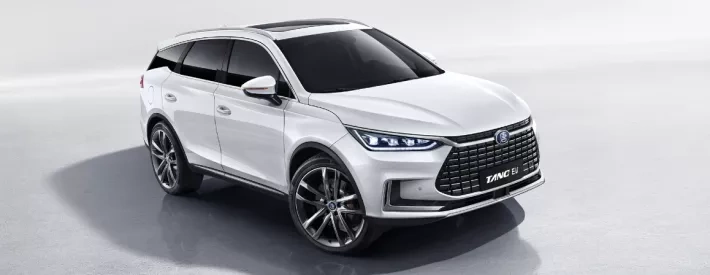Why electrification is helping Chinese brands expand their reach

As the world shifts to electric, with more manufacturers producing battery-electric vehicles the door is opening to new companies entering the market.
China has accelerated its adoption of EVs and the growth is now seeing more of its domestic manufacturers looking to other markets for expansion. It’s why Europe can expect an increased market presence from Chinese manufacturers – and it could be good for consumers, driving down the prices of vehicles, according to professional services giant Grant Thornton.
The insight forms part of the latest edition of Cox Automotive’s quarterly digital automotive insight update, AutoFocus.
The Chinese electric vehicle market is buoyant. The China Association of Vehicle Manufacturers stated that the Chinese new electric vehicle market had increased by 110%, while the broader passenger car market increased by 14%.
BYD was the strongest-performing Chinese OEM, selling 1.62 million BEV and hybrids, an increase of 132% year on year. Such strong BEV sales have driven up BYD’s market value, making it the world’s third-largest automotive company by value after Tesla and Toyota.
Philip Nothard, Insight and Strategy Director at Cox Automotive, said: “Chinese brands are pricing aggressively in their home market and clearly show more willingness to compete on price than the European and American incumbent OEMs such as BMW, Stellantis, Mercedes-Benz, Ford, and Tesla.
“Currently, retail prices for Chinese brands are not significantly lower than European and American OEMs. However, they are substantially better equipped with full infotainment and ADAS systems. In contrast, the European and American OEMs are falling short in providing this as standard equipment for their vehicles.”
The growth of BEVs
Competition from Chinese OEMs has already made it more difficult for some western OEMs to compete in the Chinese market; the GAC-Stellantis Jeep manufacturing joint venture filed for bankruptcy in October 2022. In addition, Stellantis CEO Carlos Tavares indicated that Peugeot and Citroen could exit manufacturing in the Chinese market.
Owen Edwards, Head of Downstream Automotive at Grant Thornton said: “During 2022, fewer than 2,000 Jeep vehicles were sold in China, with only one Jeep sold in May 2022. This suggests Chinese brands are taking the pricing war not only to BEVs but also to ICE vehicles. With China’s advanced battery technology, sourcing of raw materials and more advanced BEV supply chain, Chinese OEMs can manufacture BEVs €10,000 cheaper than European automakers, representing a significant cost advantage.”
New competitors
Europe is expected to experience an influx of Chinese brands over the next year or two as Chinese firms supply cut-price product offerings into the premium and mass market, aiming to gain market share quickly. This could push down BEV and ICE vehicle prices and put European OEMs’ margins under pressure.
It’s unclear whether Europe will react to the influx of Chinese vehicles in the region by imposing further tariffs on imported vehicles to protect their domestic firms. Therefore, Chinese OEMs must consider this possibility when deciding their long-term manufacturing strategies for Europe. Additionally, it may take time for them to gain a stronghold in Europe due to the lack of brand recognition and consumer acceptance and the reduction in future BEV subsidies across Europe that will generally slow BEV growth. Currently, European OEMs remain stable.
Edwards explained: “At present, OEMs’ profitability has remained robust in the face of supply chain disruptions as vehicle shortages meant retail prices for vehicles have remained high, allowing OEMs’ margins in 2021 and early 2022 to hold up well. However, the rise in raw material prices and further disruptions in the supply chain caused by gas shortages in Europe have meant the profits of many OEMs have started to suffer.
“In 2023, OEMs are likely to stabilise their earnings against a backdrop of lower costs for some raw materials and a less volatile supply and distribution chain. As a result, production in US factories is increasing, and production utilisation is heading back to more normalised levels of 76%.”
Nothard concluded: “The growing influence of Chinese brands adds another potential headwind for UK OEMs to counter in 2023. It’s also likely that the supply and demand for vehicles could be affected by any trade disruption caused by intensifying protectionism and sanctions. In addition, the UK's Department of Transport is consulting on its Zero Emissions Vehicle policy. This could mandate automotive manufacturers to register a certain number of zero-emission cars and vans in the UK by 2024, in preparation for a 2030 ban on new pure petrol and diesel vehicles.”
The move to electric will have a huge impact on the types of vehicles in the parc, but also the range of brands that fill the demand.




